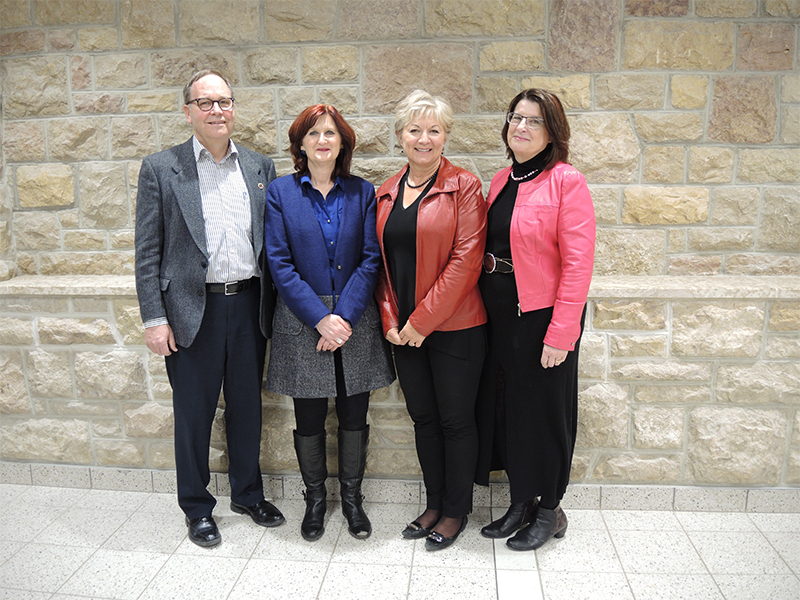
Interprofessional Team Claims Provost's Prize
The University of Saskatchewan’s (U of S) Provost’s Prize for Innovative Practice in Collaborative Teaching and Learning is awarded to a department, non-departmentalized college or interdisciplinary team for group innovation in teaching and learning. We are proud to announce College of Nursing’s Dr. Hope Bilinski, along with an interdisciplinary team from the School of Physical Therapy, the College of Pharmacy and Nutrition and the College of Medicine, have been named as the recipients of this award for 2017.
Working alongside Arlis McQuarrie, Yvonne Shevchuk and Tom Smith Windsor, Bilinski and team submitted an application for their project entitled, Rural Partnerships for Interprofessional Clinical Experiences. “The complex health issues that we see today require health care teams to work collaboratively and in a manner that has the patient, their family and the community at the center of their care,” said Bilinski. “We are always looking for opportunities where our health sciences students can learn about, with and from each other and rural communities have played a major role in helping us do so.”
There has been a lot of work done at the U of S to encourage interprofessional collaboration, but a gap still remains. Health sciences students have limited opportunities to learn from and with one another in clinical settings. In 2012, the interprofessional team of Bilinski, McQuarrie, Shevchuk and Smith Windsor received funding to create a project linking health sciences students from Medicine, Nursing, Pharmacy and Nutrition and Physical Therapy with local health care professionals in Humboldt, SK. The goals of this project included fostering an increased understanding among the students and professionals of one another’s roles and competencies. During their clinical experiences in Humboldt, health sciences students worked together to investigate the health care needs specific to a rural setting in Saskatchewan and engaged in interprofessional clinical reasoning and decision-making that was collaborative and patient-centered. A distinct advantage of the rural setting was the opportunity for health sciences students to also work with other health care providers and their students, such as lab and X-ray technicians, paramedics and health records technicians.
Bilinski feels the project has been a major success. “We have had approximately 200 students from our health sciences colleges who have been in Humboldt for their clinical experience participate in the project.” The students have worked together and learned from one another to develop resources, participate in bedside rounds, complete medication reviews and various other activities. Bilinski was excited to add that they have also been successful in replicating this project in the Melfort and Tisdale area. “It has been a great pleasure to work with these rural communities in building clinical experiences that move from a single health care professional experience to one with multiple providers and a patient-centered focus.”

